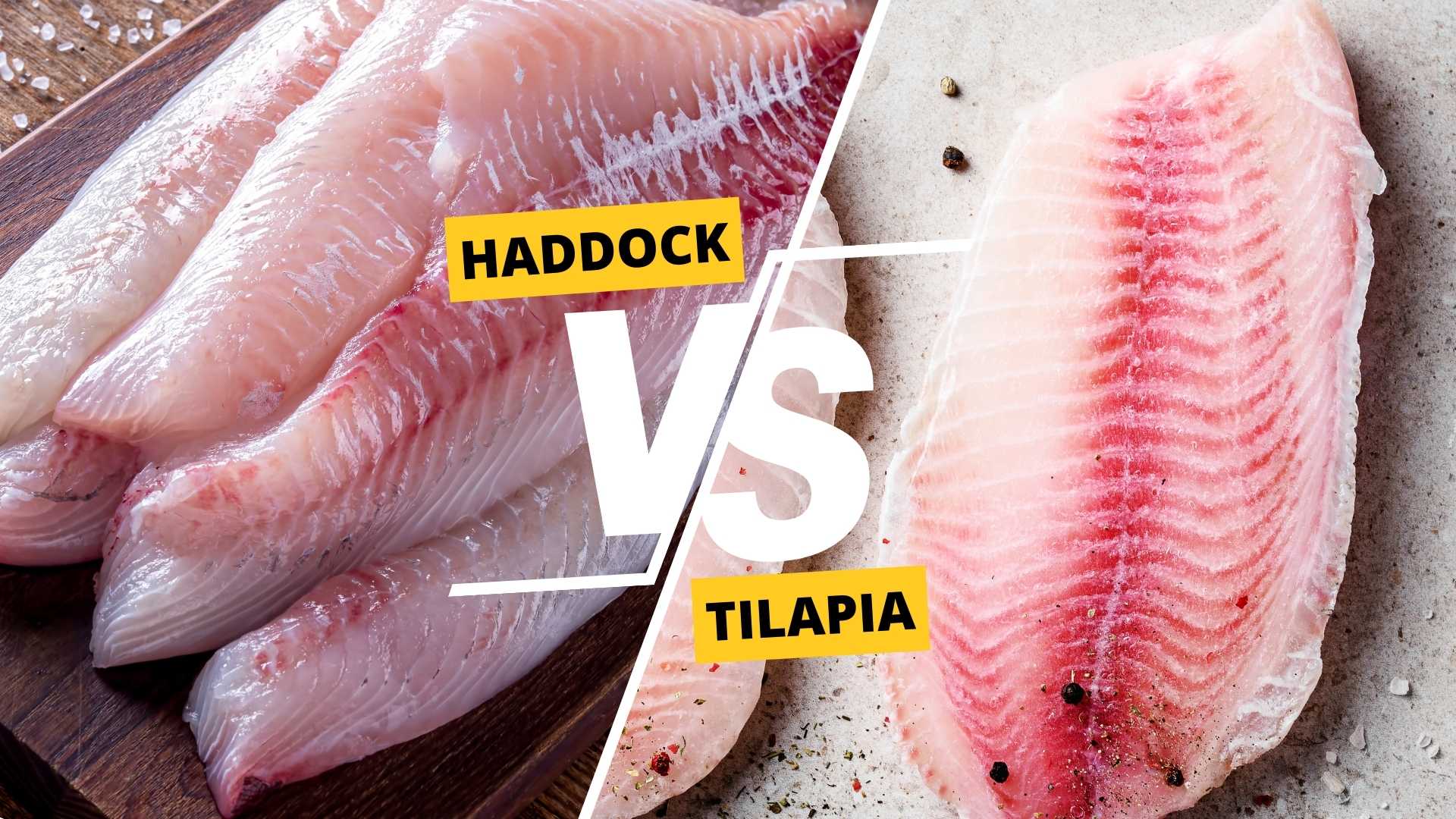When it comes to choosing a healthy and sustainable fish, haddock and tilapia are two common options. Both are white fish that can be found in many grocery stores and restaurants, but there are significant differences in their nutritional value, environmental impact, and flavor.
This article will explore the key differences between haddock and tilapia, including their nutritional value, flavor and texture, cooking techniques, environmental impact, and mercury and contaminant levels. By the end of this article, you’ll have a better understanding of which fish may be the better choice depending on your individual health and environmental concerns.
Comparison of Haddock vs Tilapia
Nutritional Value
One of the most important factors to consider when choosing a fish is its nutritional value. Haddock and tilapia are both low in calories and fat, making them a good choice for those looking to maintain a healthy weight.
However, there are some differences in their nutritional content. For example, haddock is higher in protein, with around 21 grams of protein per 100 grams of fish, compared to tilapia’s 16 grams per 100 grams. Haddock is also a good source of vitamins B6 and B12, as well as minerals such as potassium and selenium. Tilapia, on the other hand, is a good source of vitamin D and contains more omega-6 fatty acids than haddock.
Overall, both haddock and tilapia are healthy fish choices, but haddock may be the better choice for those looking to increase their protein intake and boost their vitamin and mineral intake.
Flavor and Texture
Another important factor to consider when choosing a fish is its flavor and texture. Haddock and tilapia have different tastes and textures, which can impact how they are cooked and what they are paired with.
Haddock has a slightly sweet, mild flavor and a firm texture. It is often described as being similar to cod or hake, and it is a popular choice for fish and chips, as well as for grilling, baking, and broiling.
Tilapia, on the other hand, has a mild, slightly earthy flavor and a soft texture. It is often compared to catfish, and it is a popular choice for frying, sautéing, and grilling. Tilapia can also be used in a variety of dishes, including tacos, stir-fries, and salads.
Cooking Techniques
The flavor and texture of haddock and tilapia can impact how they are cooked. For example, haddock’s firm texture makes it a good choice for grilling or baking, while tilapia’s soft texture makes it a good choice for frying or sautéing.
However, both fish can be cooked using a variety of techniques. Haddock can be grilled, baked, broiled, pan-fried, or poached, while tilapia can be grilled, baked, broiled, fried, or sautéed.
When cooking fish, it’s important to be mindful of the cooking time and temperature. Overcooking haddock can result in a dry, tough texture while overcooking tilapia can result in a mushy texture.
Environmental Impact
Another important factor to consider when choosing a fish is its environmental impact. Haddock and tilapia have different fishing practices and levels of sustainability, which can impact the health of the oceans and the future of fish populations.
Haddock is generally considered a more sustainable fish than tilapia. It is caught using longlines or trawls, which have lower bycatch rates than other fishing methods. Haddock is also certified by the Marine Stewardship Council (MSC), which means it has been independently assessed and certified as a sustainable fishery.
Tilapia, on the other hand, is often farmed rather than caught in the wild. While this can make it more readily available and affordable, it can also have negative environmental impacts. Tilapia farming can lead to pollution and the spread of disease, and it can also have negative impacts on local communities.
It’s important to choose a fish that is sustainably sourced and harvested to ensure the health of our oceans and the long-term viability of fish populations. When purchasing haddock or tilapia, look for fish that has been sustainably sourced and certified by organizations such as the MSC or the Aquaculture Stewardship Council (ASC).
Mercury and Contaminant Levels
In addition to nutritional value and environmental impact, it’s also important to consider the mercury and contaminant levels of haddock and tilapia. Both fish can contain mercury and other contaminants, which can be harmful to human health.
Haddock is generally considered to have lower mercury levels than some other types of fish, such as tuna and swordfish. However, it is still important to limit your consumption of haddock and other fish to avoid consuming too much mercury.
Tilapia is also generally considered to have lower levels of mercury than some other types of fish. However, tilapia farming practices can lead to the use of antibiotics and other chemicals, which can impact the quality and safety of the fish.
When consuming haddock or tilapia, it’s important to be mindful of your consumption and to choose fish that has been sustainably sourced and tested for contaminants.
Conclusion
Haddock and tilapia are both healthy and sustainable fish choices, but they have different nutritional values, flavors, and environmental impacts. Haddock is a good choice for those looking to increase their protein and vitamin intake, while tilapia is a good choice for those looking for mild, versatile fish.
When choosing between haddock and tilapia, it’s important to consider your individual health and environmental concerns, as well as the sourcing and testing of the fish. By choosing a fish that is sustainably sourced and free from contaminants, you can enjoy the health benefits of these tasty and nutritious fish while also supporting the health of our oceans and fish populations.
